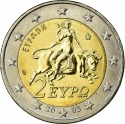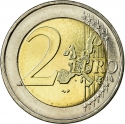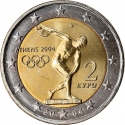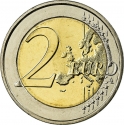You are about to finish your registration. Please check your mailbox (including spam folder). There should be a letter with a confirmation link. Check setting to make sure that your e-mail address is correct.
Send letter againDescription
During the First Balkan War, the Balkan League (Serbia, Greece, Bulgaria and Montenegro) fought against the Ottoman Empire and annexed most of its European territory, including Thrace. Western Thrace was occupied by Bulgarian troops who defeated the Ottoman army. The victors quickly fell into dispute on how to divide the newly conquered lands, resulting in the Second Balkan War. In August 1913 Bulgaria was defeated, but gained Western Thrace under the terms of the Treaty of Bucharest.
In the following years, the Central Powers (Germany, Austria-Hungary, and the Ottoman Empire), with which Bulgaria had sided, lost World War I and as a result Western Thrace was withdrawn from Bulgaria under the terms of the 1919 Treaty of Neuilly. Western Thrace was under temporary management of the Entente led by French General Charles Antoine Charpy. In the second half of April 1920 in San Remo conference of the prime ministers of the main allies of the Entente powers (except the US) Western Thrace was given to Greece.
Obverse

|
Depicts a drachma coin with a griffin left, surrounded by the inscription in Greek (100th Anniversary of the Union of Thrace), a palmette (the mint mark of the Greek Mint) on the bottom left, the date on the bottom right, the state name below. The twelve stars of the European Union surround the design on the outer ring. 100 ΧΡΟΝΙΑ ΑΠΟ ΤΗΝ ΕΝΣΩΜΑΤΩΣΗ ΤΗΣ ΘΡΑΚΗΣ |
|---|---|
Reverse

|
A geographical map of Western Europe spans the outer ring and inner core on the right side of the coin. The inscription 2 EURO is superimposed over the map of Europe, with the numeral “2” located in an open field representing the eastern Atlantic Ocean. 2 EURO |
| Edge |
HELLENIC REPUBLIC in Greek. ΕΛΛΗΝΙΚΗ ΔΗΜΟΚΡΑΤΙΑ ★ |
Swap now (2 offers)
Characteristics
| Type | Commemorative Issue (Circulating) |
| Material | Bi-Metallic |
| Ring | Cupronickel |
| Center | Nickel Brass |
| Weight | 8.5 g |
| Diameter | 25.75 mm |
| Thickness | 2.2 mm |
| Shape |
|
| Alignment | Medal |
| Mint |
Bank of Greece
|







